This is my simple religion. There is no need for temples; no need for complicated philosophy. Our own brain, our own heart is our temple; the philosophy is kindness.
-His Holiness the 14th Dalai Lama
His Holiness the Dalai Lama is one of the most beloved and recognized leaders of our time. He is the spiritual leader of Tibet, but his presence and impact is known worldwide as a statesman, spiritual teacher, and theologian. Also known by his given religious name, Tenzin Gyatso, he is the fourteenth person to be recognized as a Dalai Lama.
What is a Dalai Lama? As written on his office’s official website, “The Dalai Lamas are believed to be manifestations of Avalokiteshvara or Chenrezig, the Bodhisattva of Compassion and the patron saint of Tibet. Bodhisattvas are believed to be enlightened beings who have postponed their own nirvana and chosen to take rebirth in order to serve humanity.”
The 85-year-old self-proclaimed “simple monk” has dedicated his life to the service of humanity, promoting a universal “religion of human kindness.” As a spokesman for the peaceful and compassionate resolution of conflict, he promotes love and compassion on a global scale, and urges all beings to create their own happiness.
Contents
- The Life of His Holiness the 14th Dalai Lama
- The Dalai Lama’s Teachings on Compassion and Happiness
- The Dalai Lama’s Teachings on Buddhist Meditation and Concepts
- The Dalai Lama’s Teachings on Ethics and Responsibility
- Dalai Lama Interviews
- Appreciations of the Dalai Lama
- Dalai Lama Quotes
- Dalai Lama Books
The Life of His Holiness the 14th Dalai Lama
Early life
His Holiness the 14th Dalai Lama was born Lhamo Thondup on July 6, 1935 to a Tibetan farming family in Taktser, a peasant village in northeastern Tibet. He was one of sixteen children born into the family, nine of whom had died in infancy. At the age of two, he was recognized as the reincarnation of the 13th Dalai Lama, Thubten Gyatso. A search team had been sent out by the Tibetan government, and after following signs and visions, they were led to Lhamo Dhonup’s house. The location of the home had been described in a vision from the Panchen Lama before his death.
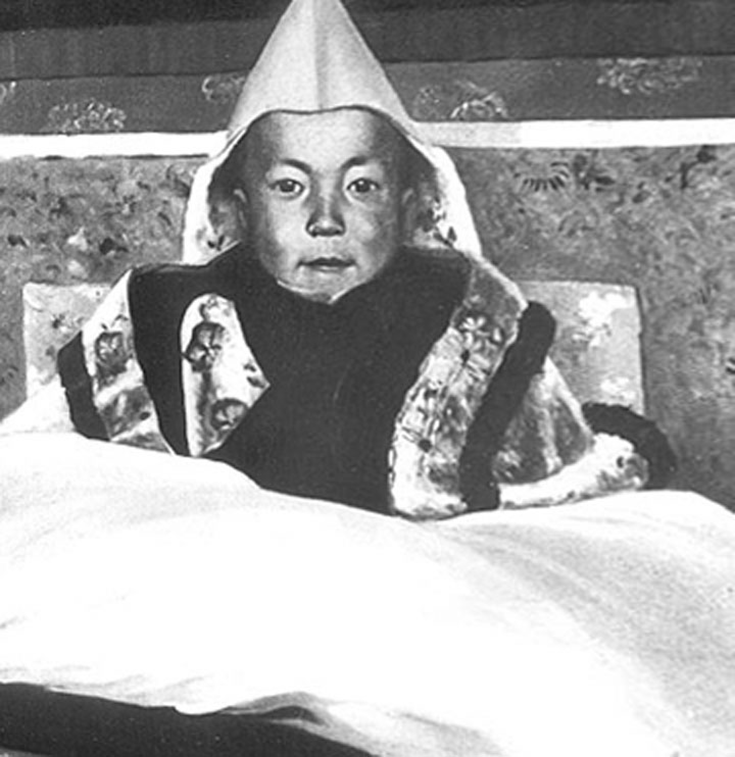

The search team posed as pilgrims, and their leader, Kewtsang Rinpoche, disguised as a servant, interacted with the boy, who recognized him as a “lama from Sera.”
The search party returned weeks later with dignitaries and performed a series of formal tests, including showing the boy objects that had belonged to the 13th Dalai Lama amongst others which had not. Lhamo Thondup chose the previous Dalai Lama’s objects each time, and so he was identified as the 14th Dalai Lama.
The boy was taken to live at Kumbum Monastery, where he remained for a long eighteen months, due to a ransom requested by warlord Ma Bufang for the boy to leave Lhasa.
Shortly after his fourth birthday, Lhamo Thondup embarked on a three-month journey to the capital city of Tibet with his family. Officials kept their recognition of Lhamo Thondup as the 14th Dalai Lama a secret from all until they had exited Ma Bufang’s area. Once Lhamo Thondup was officially deemed the reincarnated Dalai Lama he was renamed Tenzin Gyasto.
Education
At the age of six, the Dalai Lama began his formal Buddhist education in Tibet, living at the Potala Palace and studying with a succession of tutors. He studied subjects such as Buddhist philosophy, Tibetan culture, Sanskrit, and memorized Buddhist scripture. He was able to visit with his family twice a month.
In 1950, Eastern Tibet was invaded by Chinese communist forces. His Holiness, now 15 years old, assumed his position as the formal leader of the nation. The teenager was now the leader of six million people who faced the threat of a war. In 1951, he sent a delegation to meet with Chinese communist leaders in Beijing, and the “Seventeen Point Agreement for the Peaceful Liberation of Tibet” was signed, supposedly by force, surrendering Tibet to Chinese rule. The Dalai Lama traveled to Beijing in 1954 for peace talks and to discuss China’s constitution in an attempt to create a peaceful solution with China. Amidst conflict in Tibet, he traveled to India in 1956 to celebrate Buddha’s birthday, and met with India’s Prime Minister, asking to take refuge there, but he was discouraged against doing so.
In 1959, at the age of 23, the Dalai Lama took his final exam at Lhasa Johkhang Temple and passed with honors. He was awarded the geshe degree, the highest level of Buddhist education, and the equivalent to a doctorate of Buddhist philosophy.
Exile from Tibet
After completing his degree, the Dalai Lama and his entourage fled Tibet, following fears of abduction by the Chinese military and urgings from the Tibetan people that he was unsafe. He took exile in Dharamshala, India, and tens of thousands of Tibetan refugees followed. His Holiness established a Tibetan education system, and re-founded 200 monasteries and nunneries to preserve the Tibetan way of life in India.
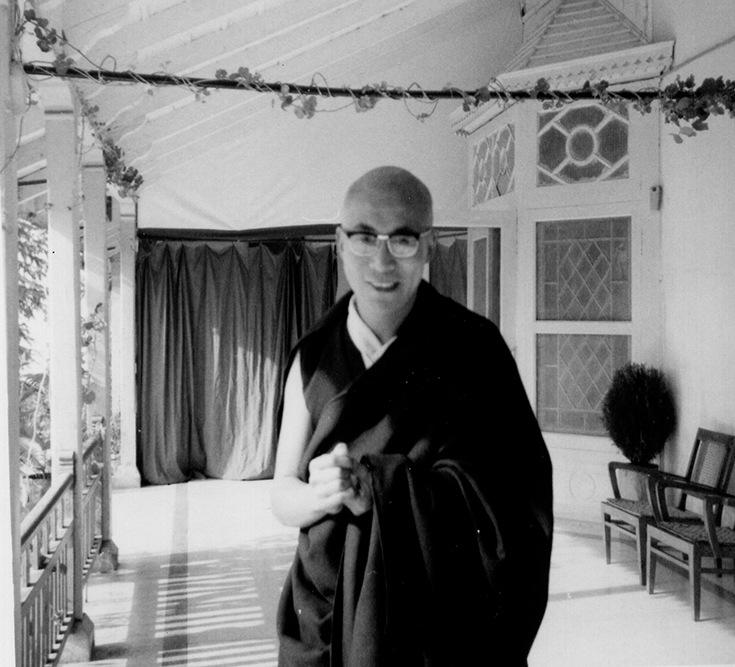

The Dalai Lama established a Tibetan Parliament-in-exile. He appealed to the United Nations for the rights of Tibetans, which resulted in three resolutions between 1959 and 1965 calling on China to respect the human rights of Tibetans, but all three were largely ignored. In 1970, he opened the Library of Tibetan Works and Archives in Dharamshala, which remains one of the most important institutions for Tibetology in the world.
His Holiness took his first foreign trip since exile to Japan and Thailand in 1967, and has since continued to travel the world, meeting with other religious leaders and political figures, and promoting peace.
In 1987, the Dalai Lama gave a speech at the Congressional Human Rights Caucus in Washington, D.C., outlining his five-point plan for Tibet to become a democratic “zone of peace.” This plan came to be known as the “Strasbourg proposal,” after he expanded upon it by proposing the creation of a self-governing Tibet the following year in Strasbourg.
In 1989, at the age of 54, His Holiness was awarded the Nobel Peace Prize, for his opposition to violence and his determination for the preservation of Tibetan culture through peaceful solutions.
The Dalai Lama’s dialogue with science
The Dalai Lama has long held a special interest in science, particularly science of the mind. In 1987, he helped found the Mind & Life Institute, a foundation dedicated to “alleviate suffering and promote flourishing by integrating science with contemplative practice and wisdom traditions.” He has created personal connections with many scientists, and has encouraged the scientific exploration of Buddhist meditation.
In his Nobel Prize acceptance speech, he said “With the ever growing impact of science on our lives, religion and spirituality have a greater role to play reminding us of our humanity. There is no contradiction between the two. Each gives us valuable insights into the other. Both science and the teachings of the Buddha tell us of the fundamental unity of all things. This understanding is crucial if we are to take positive and decisive action on the pressing global concern with the environment.”
The Dalai Lama today
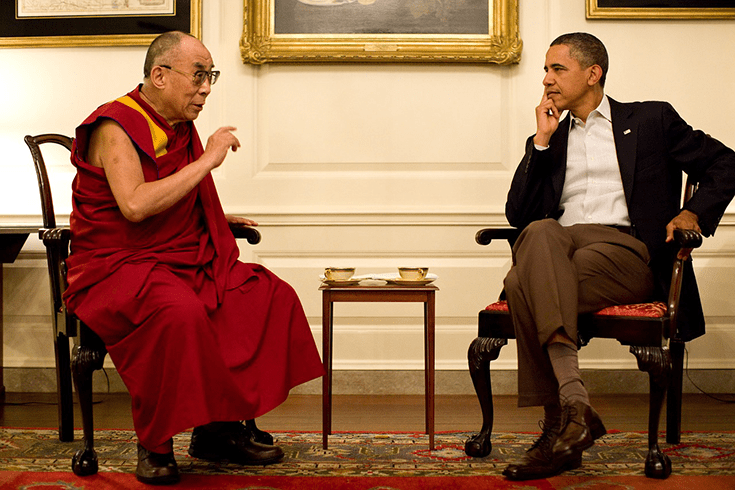

When home in Dharamshala, India the Dalai Lama maintains a routine day of meditation, exercise, studying Buddhist texts, and catching up with world news on his radio. He has written over 70 books, and continues to travel the world, meeting with dignitaries and giving public talks on a variety of subjects.
Although his wish for Tibet to be a “peace zone” has yet to manifest, he continues to advocate for the cause and promote nonviolence around the world.
At 81 years old, His Holiness says he is unsure whether he will reincarnate, but he plans to evaluate whether the custom should continue after his 90th birthday.
The Dalai Lama’s Teachings on Compassion and Happiness
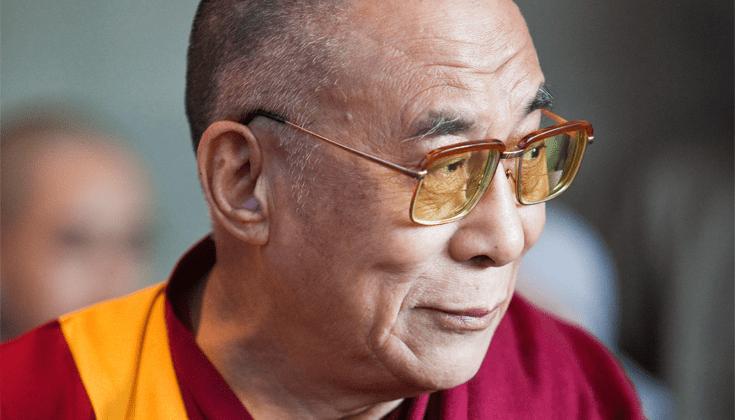

Basically Good
His Holiness the Dalai Lama on good heart, awakened mind, the causes of happiness and other basic principles of Buddhism.
Only Genuine Compassion Will Do
It’s not enough to simply to believe compassion is important. We must transform our thoughts and behaviour on a daily basis to cultivate compassion without attachment.
Living the Compassionate Life
This teaching by the Dalai Lama explains how the Buddhist teachings of mindfulness and compassion lead inevitably to feelings of self-confidence and kindness.
Good Heart
A good heart is the source of all happiness, says His Holiness the Dalai Lama, and we can all be good-hearted with some effort. But better still, he says, is to have bodhichitta—a good heart imbued with wisdom.
The Dalai Lama’s Teachings on Buddhist Meditation and Concepts
Beyond No-Self
According to many Buddhist schools, grasping at the notion of a real and substantial self is the root of ignorance. But while insight into the truth of personal selflessness, or no-self, is an important step, says the Dalai Lama in his book, The Middle Way, it doesn’t go far enough.
Discover Your Innermost Awareness
In his teaching on the essence of Dzogchen, the Dalai Lama describes the shock that naturally accompanies an experience of innermost awareness, which is actually the basis of all reality.
Developing the Mind of Great Capacity
A teaching on practices to generate bodhichitta by His Holiness the Dalai Lama.
The Dalai Lama’s Teachings on Ethics and Responsibility
New Ethic for a Small Planet
If the twenty-first century is to be one of peace and caring, says His Holiness the Dalai Lama in this heartfelt personal plea, we must develop a new ethic of human values that transcends religion.
The Heart of the Buddha
Forget all the fancy meditation practices, says His Holiness the Dalai Lama, the real heart of Buddhism is complete commitment to others. In this commentary on The Way of the Bodhisattva, he describes the awakened heart of the Buddha, which is his vow to attain enlightenment for the sake of all sentient beings.
Dalai Lama Interviews
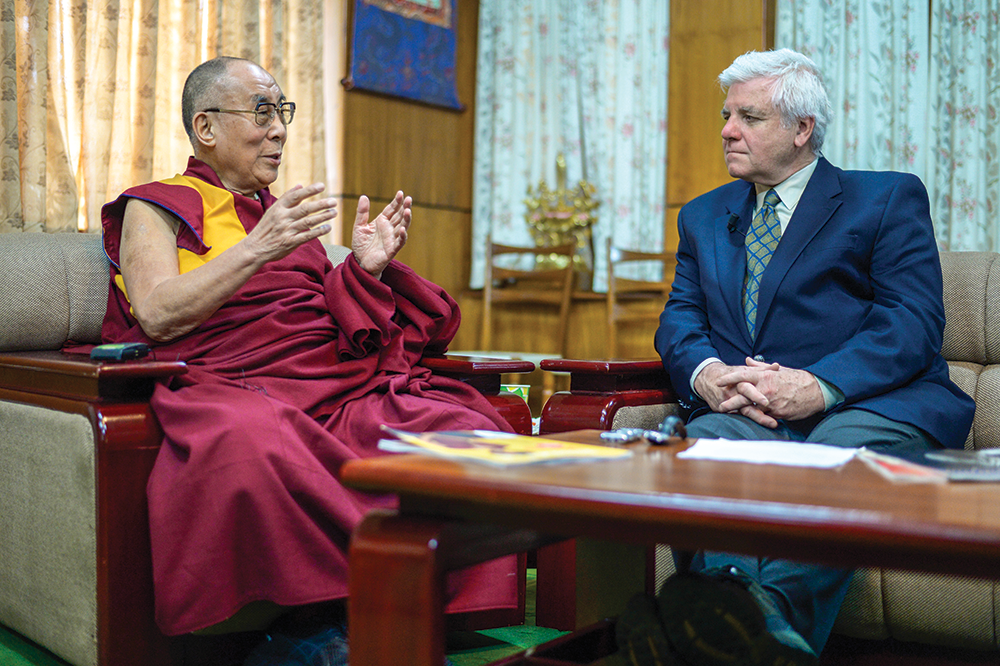

The Ultimate Happiness
In this exclusive conversation, the Dalai Lama talks about human goodness, why the self doesn’t (and does) exist, and how caring for others is the ultimate source of your own happiness.
A Day in the Life of the Dalai Lama
If you were the Dalai Lama, how would you spend a day? In a classic Pico Iyer interview with the Dalai Lama from the turn of the century, His Holiness shared an intimate glimpse of a day in the life of a global religious leader.
Appreciations of the Dalai Lama
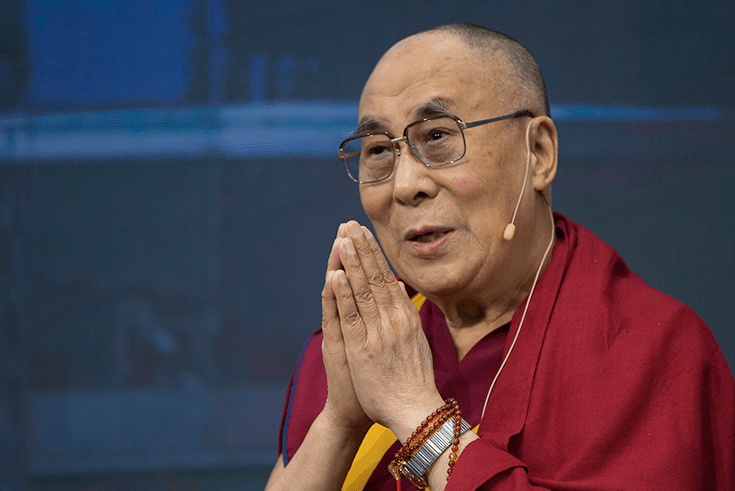

Radar of Compassion
Pico Iyer on the Dalai Lama’s unerring ability to home in on those who most need his love.
Heart of the Dalai Lama
For thirty-five years Pico Iyer has been a friend, observer, and student of the Dalai Lama. In this exclusive and heartfelt essay, he reveals the simple human secret that makes His Holiness the most beloved spiritual figure in the world.
Educating the Heart
Teaching young people about compassion is one of the most important things we can do for them, says the Dalai Lama, and for the future of humanity. In this article from 2007, Melvin McLeod reports from Vancouver, where His Holiness talked with students and education experts about schooling for the heart as well as for the mind.
Feeding the Spiritually Hungry
For all their material success, says Pico Iyer, many Japanese feel alienated and spiritually starved. They responded hungrily to the Dalai Lama’s teachings on his recent tour of Japan.
Two Sciences of Mind
Barry Boyce reports on the dialogue between cutting-edge science and Buddhism’s 2500-year study of the mind.
The Meaning of the Dalai Lama for Today
Robert Thurman sees the Dalai Lama as a reincarnation of the Buddha of universal compassion. Amidst the chaos of today’s world, he says, the “simple monk” remains undaunted, and even cheerful.
Dalai Lama Quotes
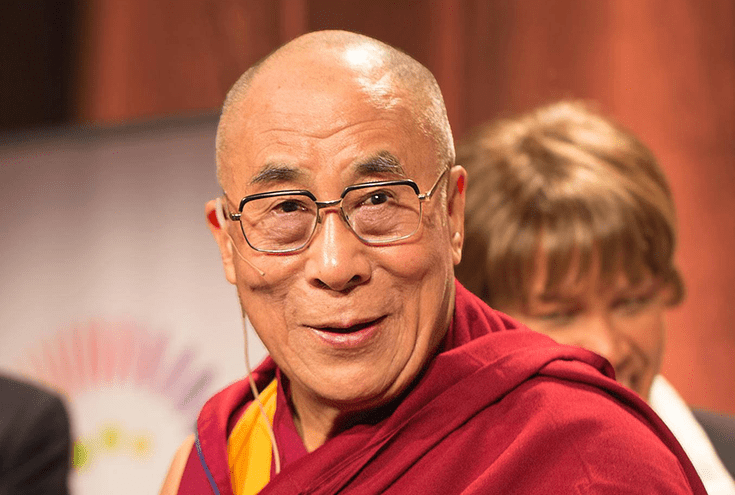

We live and we die, this is the truth that we can only face alone. No one can help us, not even the Buddha. So consider carefully, what prevents you from living the way you want to live your life?
If you think you are too small to make a difference, try sleeping with a mosquito.
Be kind whenever possible. It is always possible.
Remember that sometimes not getting what you want is a wonderful stroke of luck.
We have to make a sustained effort, again and again, to cultivate the positive aspects within us.
Dalai Lama Books
My Spiritual Journey
with Sofia Stril-Rever
HarperOne
A native of Japan with more than twenty years under his belt as a manga artist, Tetsu Saiwai specializes in creating manga related to environmental protection and human rights issues. His manga The 14th Dalai Lama, which tells the story of His Holiness’ childhood and youth, is especially moving. My Spiritual Journey presents the Dalai Lama’s story in his own words. Troubling memories are found on these pages, but so are delightful ones. This anecdote from his childhood makes me laugh: traditionally in the Dalai Lama’s kitchen, no pork, eggs, or fish were cooked. But when visiting his family, he would sit next to his pork-loving father, “almost like a little dog waiting for his tidbit… It was a little illegal!”
Profound Mind: Cultivating Wisdom in Everyday Life
Harmony Books
A Profound Mind is based on talks the Dalai Lama gave in New York City in which he delved into the meaning of ancient texts such as the Diamond Cutter Sutra and Seventy Verses on Emptiness. His teachings are clear, concise, and fresh, and they have a practical aspect. His aspiration for this book is to dispel misconceptions about Buddhism by mapping out its true beliefs, and to invite people of other faiths to incorporate into their practice any elements of Buddhism that they feel would be helpful. The afterword is by Richard Gere.
Emotional Awareness: Overcoming the Obstacles to Psychological Balance and Compassion
Times Books
If you regularly peruse this department, your eyes may glaze over at the mention of yet another book on psychology and Buddhism. But Emotional Awareness—which takes the form of an extended conversation between high-caliber subject experts Paul Ekman and the Dalai Lama—offers a fresh, unique exploration of many subtle issues raised by the intersection of these disciplines. The conversation format works well here because it allows the reader to witness a personal relationship develop between two “scientists of the mind” as they gently probe each other’s system of thought with striking intellectual rigor. Both have dedicated their lives to reducing psychological suffering and now, in the autumn of their careers, seem to enjoy the opportunity to refine their views through dialogue. (The two first met in 2000 through the Mind and Life Institute, which brings together the Dalai Lama and researchers to discuss scientific topics.) Full of intelligence, unexpected humor, and tender surprises, Emotional Awareness clarifies for the layman what the big deal is about psychology and Buddhism.
The Wisdom of Compassion: Stories of Remarkable Encounters and Timeless Insight
Riverhead Books
Just out of college in 1972, Victor Chan drove a used VW camper from the Netherlands to Afghanistan. When in Kabul he met a New Yorker named Cheryl Crosby, and they were at a chai shop when they were abducted at gunpoint. By the time they managed to escape their kidnappers, the harrowing experience had bonded them, and they left for India together. There, because of some of Crosby’s connections, they were granted an audience with the Dalai Lama, yet Chan managed to blurt out just one question: “Do you hate the Chinese?” In those days the Dalai Lama’s English was bare-bones, so mostly he relied on a translator, but he answered this question in English—emphatically. “No, I do not hate the Chinese.” Then his secretary translated, “His Holiness considers the Chinese his brothers.” Fast-forward to today and Chan, of Chinese descent, has written two books, which he has created by interviewing the Dalai Lama extensively. In their new release, Wisdom of Compassion, they explore the idea of compassion in thought, speech, and action.
Mind in Comfort and Ease: The Vision of Enlightenment in the Great Perfection
Wisdom
This book on the Dzogchen (Great Perfection) teachings of Tibetan Buddhism records the teachings that His Holiness the Dalai Lama offered to over 10,000 attendees at Sogyal Rinpoche’s center in the south of France in 2000. The teachings consisted of an extensive commentary on one of the classic texts of the Dzogchen tradition, Longchen Rabjam’s fourteenth-century masterpiece, Finding Comfort and Ease in Meditation on the Great Perfection. This is the first oral commentary on this work to be published in English, making it a major contribution to Western literature on Dzogchen.
From Here to Enlightenment
Snow Lion
Over the course of six days in 2008 at Lehigh University, the Dalai Lama delivered his longest teaching to a Western audience on a single Buddhist text. The teaching—on Tsongkhapa’s Great Treatise on the Stages of the Path to Enlightenment— is considered within the Geluk tradition to be a masterpiece on the progressive levels of maturation along the path. The Dalai Lama describes this work as “something very dear to me”—it was one of the few texts that he took with him when he escaped his homeland in 1959. The Stages of the Path, previously published in a multivolume English translation, is direct in its explanation of how to follow a spiritual teacher, cultivate a loving heart, and see with a vision of emptiness. With his usual grace and wit, the Dalai Lama makes these classic Tibetan teachings relevant to the Western practitioner, emphasizing the essential points and elaborating on those that are less obvious.
